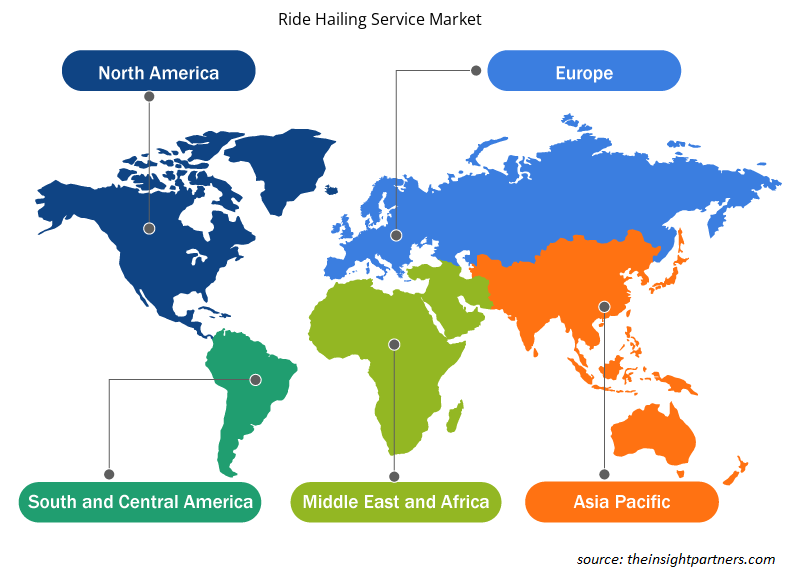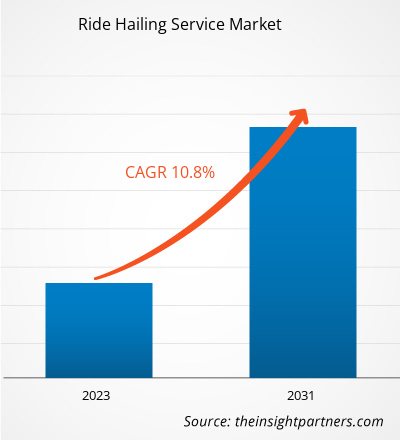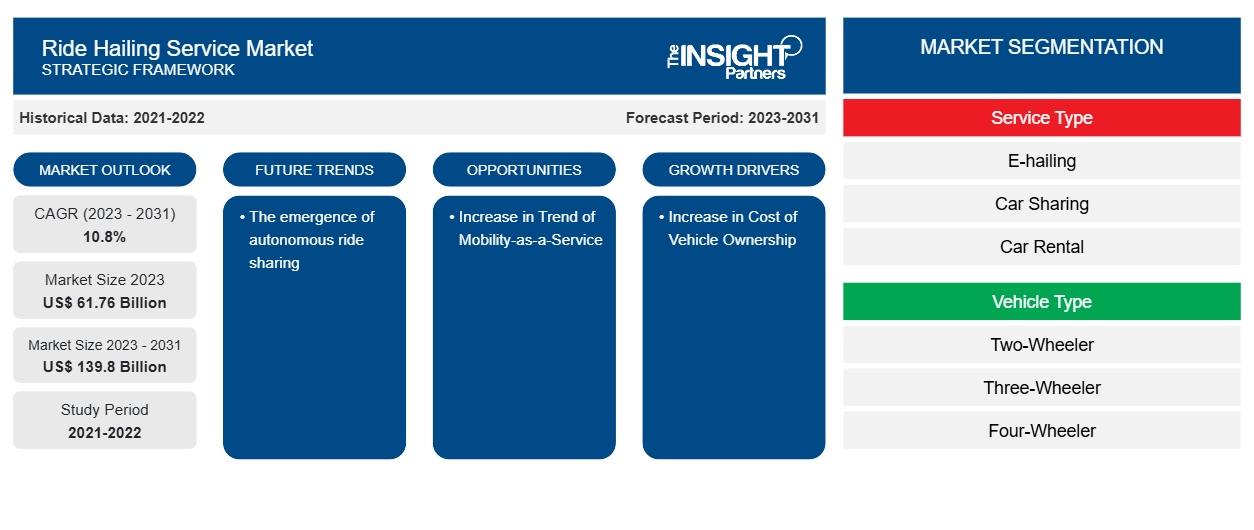预计到 2031 年,网约车服务市场规模将从 2023 年的 617.6 亿美元增至 1398 亿美元。预计 2023-2031 年期间,该市场的复合年增长率将达到 10.8%。自动驾驶共享乘车的兴起很可能仍是市场的主要趋势。
网约车服务市场分析
全球按需运输服务趋势的上升预计将在未来几年推动市场增长。此外,预计汽车拥有成本的增加将在预测期内刺激对叫车服务的需求。此外,全球移动即服务趋势的上升预计将进一步推动叫车服务市场从 2023 年到 2031 年的增长。
网约车服务市场概况
叫车服务市场生态系统的关键利益相关者包括技术解决方案提供商、叫车服务提供商和最终用户。技术解决方案提供商包括联网设备或其他硬件制造商和软件开发商。技术解决方案提供商数量的增加对推动叫车服务的数字化至关重要。由于按需交通服务的上升趋势、就业机会的创造以及千禧一代的汽车拥有率低,预计叫车服务将在后疫情时代增加。此外,联网和自动驾驶汽车的技术进步减少了二氧化碳排放,这些用于叫车服务的智能高效汽车的销量大幅增加,推动了全球市场的增长。叫车服务提供商从技术解决方案提供商那里获取服务。随着叫车技术的不断发展,对叫车服务市场的需求也在增加。
定制此报告以满足您的需求
您可以免费定制任何报告,包括本报告的部分内容、国家级分析、Excel 数据包,以及为初创企业和大学提供优惠和折扣
-
获取此报告的关键市场趋势。这个免费样品将包括数据分析,从市场趋势到估计和预测。
网约车服务市场驱动因素和机遇
车辆持有成本上升利好市场
财务、燃料、保养、登记/税收和维护以及折旧都会增加汽车拥有成本。拥有一辆车的费用逐年增加。根据美国汽车协会 (AAA) 的数据,折旧占总拥有成本的 43% 以上。然而,维护和汽油等其他成本占 25%。过去 10 年,燃油价格和维护成本大幅上涨,预计未来几年还会增加。虽然汽车拥有量在疫情期间有所增加,但预计在 2021 年后会下降并恢复到疫情前的水平。这使得叫车服务提供商能够从这种人口发展中受益,因为新一代精通技术的一代是这些服务最活跃的用户之一。
移动即服务趋势增强
无法购买车辆的客户可以通过移动服务体验无缝旅行。移动即服务通过最大化汽车共享和叫车成本来降低拥有和运营成本。此外,快速的城市化步伐已经导致交通拥堵。移动即服务 (MaaS) 概念可能是通过更多地利用现有的公共和私人交通网络来最大限度地减少交通拥堵的更好选择。对处理智能城市交通的有效解决方案的迫切和不断增长的需求,反过来预计将推动叫车服务市场到 2031 年的增长。因此,移动即服务 (MaaS) 的增长趋势预计将推动全球叫车服务市场的增长。
网约车服务市场报告细分分析
促成网约车服务市场分析的关键部分包括服务类型、车辆类型、位置和最终用户
- 根据服务类型,网约车服务市场分为电子叫车、汽车共享、汽车租赁和站点式出行。电子叫车细分市场在 2023 年占据了最大的市场份额。
- 根据车辆类型,市场分为两轮车、三轮车、四轮车和其他。四轮车在 2023 年占据了最大的市场份额。
- 根据地理位置,市场分为城市和农村。2023 年,城市地区占据了相当大的市场份额。
- 根据最终用户,市场分为机构和个人。2023 年,机构部分占据了较大的市场份额。
网约车服务市场份额(按地区)分析
网约车服务市场报告的地理范围主要分为五个地区:北美、亚太、欧洲、中东和非洲、南美。
网约车服务市场报告的范围包括北美(美国、加拿大和墨西哥)、欧洲(德国、法国、意大利、西班牙、英国和欧洲其他地区)、亚太地区(中国、印度、澳大利亚、日本、韩国和亚太地区其他地区)、中东和非洲(南非、沙特阿拉伯、阿联酋和中东和非洲其他地区)和南美洲(巴西、阿根廷和南美洲其他地区)。就收入而言,亚太地区在 2023 年占据了网约车服务市场份额的主导地位。北美是全球网约车服务市场的第二大收入贡献者,其次是欧洲。
叫车服务市场区域洞察
Insight Partners 的分析师已详细解释了预测期内影响叫车服务市场的区域趋势和因素。本节还讨论了北美、欧洲、亚太地区、中东和非洲以及南美洲和中美洲的叫车服务市场细分和地理位置。

- 获取叫车服务市场的区域特定数据
叫车服务市场报告范围
| 报告属性 | 细节 |
|---|---|
| 2023 年的市场规模 | 617.6亿美元 |
| 2031 年市场规模 | 1398亿美元 |
| 全球复合年增长率(2023 - 2031) | 10.8% |
| 史料 | 2021-2022 |
| 预测期 | 2023-2031 |
| 涵盖的领域 |
按服务类型
|
| 覆盖地区和国家 |
北美
|
| 市场领导者和主要公司简介 |
|
网约车服务市场参与者密度:了解其对业务动态的影响
网约车服务市场正在快速增长,这得益于终端用户需求的不断增长,而这些需求又源于消费者偏好的不断变化、技术进步以及对产品优势的认识不断提高等因素。随着需求的增加,企业正在扩大其产品范围,进行创新以满足消费者的需求,并利用新兴趋势,从而进一步推动市场增长。
市场参与者密度是指在特定市场或行业内运营的企业或公司的分布情况。它表明在给定市场空间中,相对于其规模或总市场价值,有多少竞争对手(市场参与者)存在。
在叫车服务市场运营的主要公司有:
- ANI技术私人有限公司
- 戴姆勒公司
- 德尔福科技公司
- 滴滴全球有限公司
- 盖特
- Grab 控股公司
免责声明:上面列出的公司没有按照任何特定顺序排列。

- 获取叫车服务市场顶级关键参与者概览
网约车服务市场新闻及最新发展
通过收集一手和二手研究后的定性和定量数据来评估网约车服务市场,其中包括重要的公司出版物、协会数据和数据库。以下列出了网约车服务市场的一些发展情况:
- 叫车服务提供商 Kakao Mobility 通过在亚洲和中东推出叫车服务扩大了其影响力。(来源:Kakao Mobility,新闻稿,2023 年 11 月)
- 滴滴全球公司在南非开普敦开始注册司机,并开始为该国第二大城市的消费者提供叫车服务。(来源:滴滴全球公司,新闻稿,2021 年 3 月)
叫车服务市场报告覆盖范围和交付成果
“叫车服务市场规模和预测(2021-2031 年)”报告对市场进行了详细分析,涵盖以下领域:
- 范围内涵盖的所有主要细分市场的全球、区域和国家层面的叫车服务市场规模和预测
- 网约车服务市场趋势以及驱动因素、限制因素和关键机遇等市场动态
- 详细的 PEST 和 SWOT 分析
- 叫车服务市场分析涵盖关键市场趋势、全球和区域框架、主要参与者、法规和最新市场发展
- 行业格局和竞争分析,涵盖市场集中度、热点图分析、知名参与者以及网约车服务市场的最新发展
- 详细的公司简介
- 历史分析(2 年)、基准年、预测(7 年)及复合年增长率
- PEST和SWOT分析
- 市场规模、价值/数量 - 全球、区域、国家
- 行业和竞争格局
- Excel 数据集
近期报告
客户评价
购买理由
- 明智的决策
- 了解市场动态
- 竞争分析
- 客户洞察
- 市场预测
- 风险规避
- 战略规划
- 投资论证
- 识别新兴市场
- 优化营销策略
- 提升运营效率
- 顺应监管趋势























 获取免费样品 - 网约车服务市场
获取免费样品 - 网约车服务市场